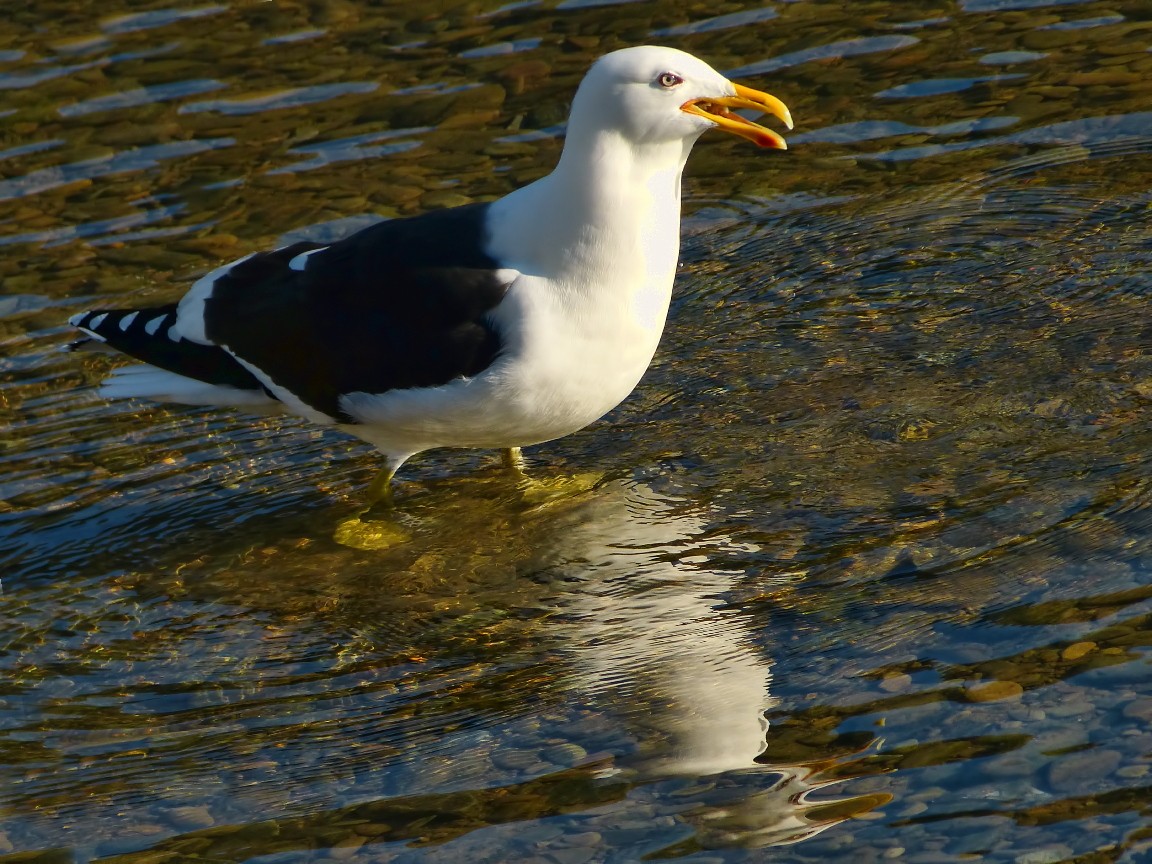Kelp Gull
A species of Gulls Scientific name : Larus dominicanus Genus : Gulls
Kelp Gull, A species of Gulls
Botanical name: Larus dominicanus
Genus: Gulls
Content
Description People often ask General Info
Description
The kelp gull superficially resembles two gulls from further north in the Atlantic Ocean, the lesser black-backed gull and the great black-backed gull and is intermediate in size between these two species. This species ranges from 54 to 65 cm (21 to 26 in) in total length, from 128 to 142 cm (50 to 56 in) in wingspan and from 540 to 1,390 g (1.19 to 3.06 lb) in weight. Adult males and females weigh on average 1,000 g (2.2 lb) and 900 g (2.0 lb) respectively. Among standard measurements, the wing chord is 37.3 to 44.8 cm (14.7 to 17.6 in), the bill is 4.4 to 5.9 cm (1.7 to 2.3 in) and the tarsus is 5.3 to 7.5 cm (2.1 to 3.0 in). The adult kelp gull has black upperparts and wings. The head, underparts, tail, and the small "mirrors" at the wing tips are white. The bill is yellow with a red spot, and the legs are greenish-yellow (brighter and yellower when breeding, duller and greener when not breeding). The call is a strident ki-och. Juveniles have dull legs, a black bill, a dark band in the tail, and an overall grey-brown plumage densely edged whitish, but they rapidly get a pale base to the bill and largely white head and underparts. They take three or four years to reach maturity. 
Size
58-61 cm (23-24 in)
Life Expectancy
24 years
Nest Placement
Ground
Feeding Habits
Kelp Gull has a varied diet that includes seafood, refuse, small animals, and eggs. They forage by scavenging, hunting, or opportunistic feeding, with unique adaptability to both natural and human-altered environments.
Habitat
Kelp Gull predominantly occupies coastal habitats, including coastal waters and adjacent land areas. These birds are also found around large inland lakes, especially in regions with significant elevation, such as the Argentine Andes. Habitats such as estuaries, rivers, lawns, and farmland provide additional foraging and roosting sites. Kelp Gull often breeds on oceanic islands, sea cliffs, and even urban settings. They have even been recorded breeding up to 10 km inland in some locales and on mountainous lakeshores at considerable altitudes.
Dite type
Scavenger
People often ask
General Info
Feeding Habits
Bird food type
Behavior
Kelp gulls are omnivores like most Larus gulls, and they will scavenge as well as seek suitable small prey. They gather on landfills and a sharp increase in population is therefore considered as an indicator for a degraded environment. Kelp gulls have been observed feeding on live right whales since at least 1996. The kelp gull uses its powerful beak to peck down centimetres into the skin and blubber, often leaving the whales with large open sores, some of which have been observed to be half a meter in diameter. This predatory behavior has been documented in Argentinian waters, and continues today. At rocky sites along the southern African coast, such as at Boulders Beach in Cape Town, kelp gulls (Larus dominicanus vetula) can be seen picking up shellfish and repeatedly flying up several meters and dropping them onto the rocks below in order to break them open. They have also been reported pecking the eyes out of seal pups on the coast of Namibia before attacking the blind seals in a group. The nest is a shallow depression on the ground lined with vegetation and feathers. The female usually lays 2 or 3 eggs. Both parents feed the young birds. 
Species Status
Not globally threatened.
